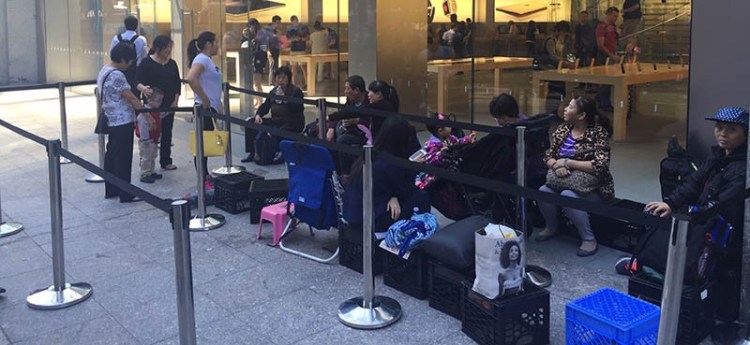Many of us are reading about the launch of the newest iPhone tomorrow — the iPhone 6s — and wondering if upgrading is a good idea. Most of the early reviews of the phones say it’s debatable.
Of course, it depends a lot on the phone you’re using now, and whether or not you’re under contract. But focusing on the appeal of the new phone itself, let’s turn down some of the noise (Live Photos is a parlor trick) and get to the real reasons why you should or shouldn’t consider the iPhone 6s.
Pros
You could shoot better pictures. The new 6s phones have a 12-megapixel rear-facing iSight camera, which Apple says will create brighter and clearer stills and video. This is an improvement over the 8-megapixel rear camera in the iPhone 6. (The limitations of that camera can be clearly seen in the washed-out details of images.)
 The front-facing (or “selfie”) camera also gets an upgrade with the iPhone 6s. The new phones ship with a 5-megapixel front-facing camera, a decided improvement over the 1.2-megapixel camera in the iPhone 6.
The front-facing (or “selfie”) camera also gets an upgrade with the iPhone 6s. The new phones ship with a 5-megapixel front-facing camera, a decided improvement over the 1.2-megapixel camera in the iPhone 6.
3D Touch is actually pretty useful. The new iPhone 6s and 6s Plus offer a new input feature called 3D Touch and haptic feedback. It’s a touchscreen technology that can detect various types of user touch. A “3D Touch” is a long finger-press on the screen that conveys a different message to the operating system than a light tap or a normal touch. The screen then responds with haptic feedback — a tap — that gives you the illusion you’ve pressed down on a physical button.
Your phone will run faster. The iPhone 6s and 6s Plus are powered by Apple’s new 64-bit A9 processor, which Apple says can render graphics up to 90 percent faster than earlier chips. The increased processing power, Apple said, will be most readily apparent in gameplay and video playback. The M9 motion co-processor is baked directly into the chipset in the phone to power things like health apps and Siri.
The iPhone 6 may offer some users faster wireless connection speeds. There’s a new antenna system inside the device that can theoretically (in the lab) produce LTE Advanced download speeds up to 300 Mbps. And a new 802.11ac Wi-Fi radio with multiple antennas could pump up Wi-Fi speeds.
Cons
It’s an expensive phone. Unlike many Android players, Apple has been able to stick to its premium price points for devices. And I mean premium. The top-of-the-line iPhone 6s Plus 128GB version retails at $950. The bottom-of-the-line iPhone 6s 16GB retails for $650. If you bought a Plus with a reasonably generous service plan, your monthly payment could be nearly $100.
It looks just like your existing phone. The iPhone 6s looks exactly like the iPhone 6, so you won’t necessarily enjoy the social cache of owning the latest and greatest Apple phone. If you get one of the new color options — space gray or rose gold — some people might notice. Sounds trivial, but to many people it’s not. Apple products are “aspirational;” people are willing to pay the high price because they are accessorizing the smart, upwardly mobile, affluent person they want to be.
Another commitment. It wasn’t that long ago that you signed a two-year contract with your wireless carrier. It was last year when you bought your new iPhone 6. Now you want the iPhone 6s.
Many buyers will choose to sign up for a 2-year contract instead of going month-to-month with a phone financing plan, or a lease. That will restart the clock on the contract period. And under the financing plans, you are on the hook to make payments for 12-24 months, depending on your carrier’s options.
Not that there aren’t any deals out there. Sprint is offering a dollar-per-month deal for the 16GB iPhone 6s, with trade-in of an old iPhone 6. Consumers who trade in can also get the 64GB version for $5.77 each month, and the 128GB model for $10.53 a month.
T-Mobile said consumers enrolled in its Jump program can get the 16GB iPhone 6s for $5 per month and no money down, or consumers can get the 16GB 6s Plus for $9 per month. However, for 64GB and 128GB models, consumers will have to pay an upfront cost of $99-$199, depending on the phone.



